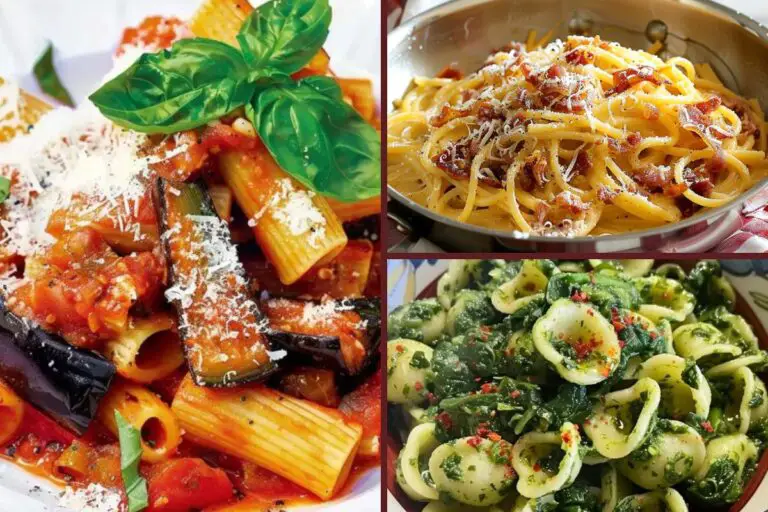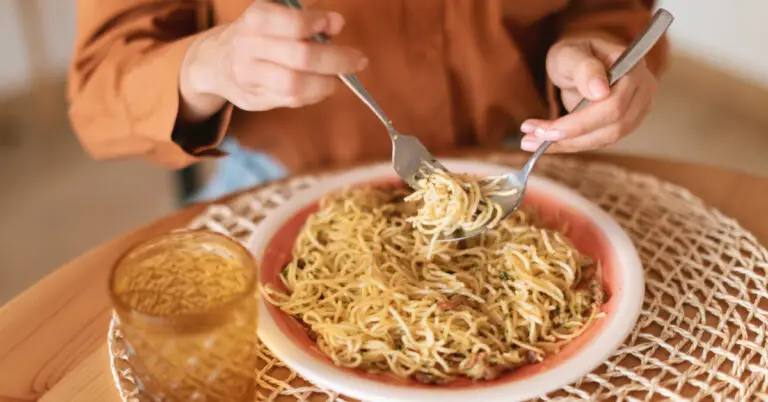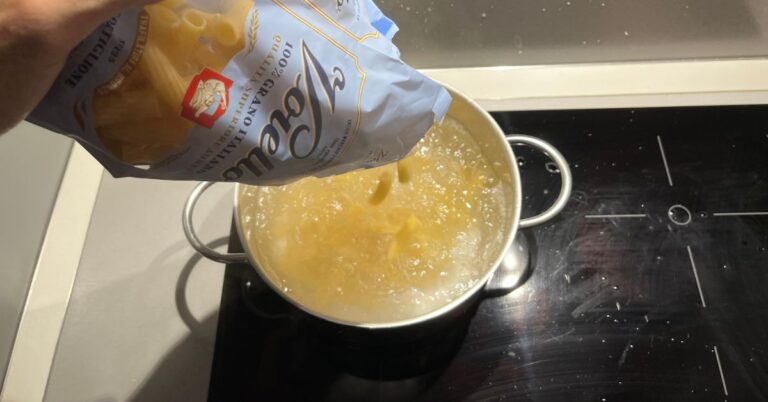In Italy, the sauce is always mixed with the pasta before it’s served on the plate, we typically mix our cooked pasta directly in the pan with the prepared sauce before serving. However, with sauces that don’t require cooking, like pesto or jarred pasta sauce, we add the sauce directly onto the pasta. Then, this mixture is stirred in a saucepan or pot and served on individual plates. AS SHOWN IN THIS VIDEO ↓↓↓↓↓↓↓
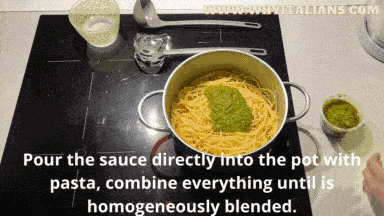
COMMON MISTAKE: Pouring Pasta Sauce Over the Pasta on the Plate
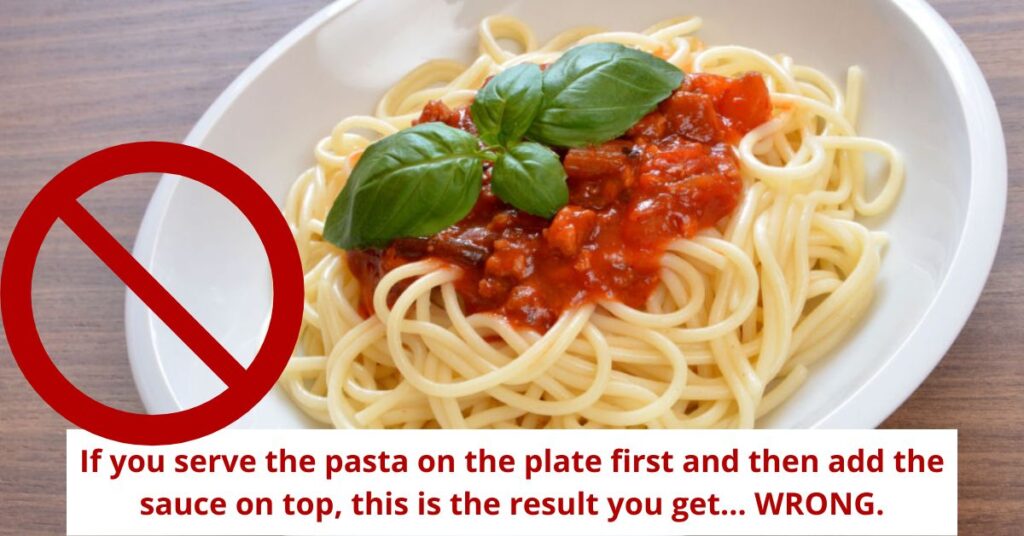
In U.S. movies and TV, the ‘classic’ Italian spaghetti scene usually stars some lonely noodles drowning under a mountain of red sauce. It’s a Hollywood staple and a big hit in Italian-American kitchens, but let’s be real – in the land of real Italian cooking, this dish would barely get a callback! Authentic Italian cuisine blends the sauce and pasta like a perfect duet, not a solo act.
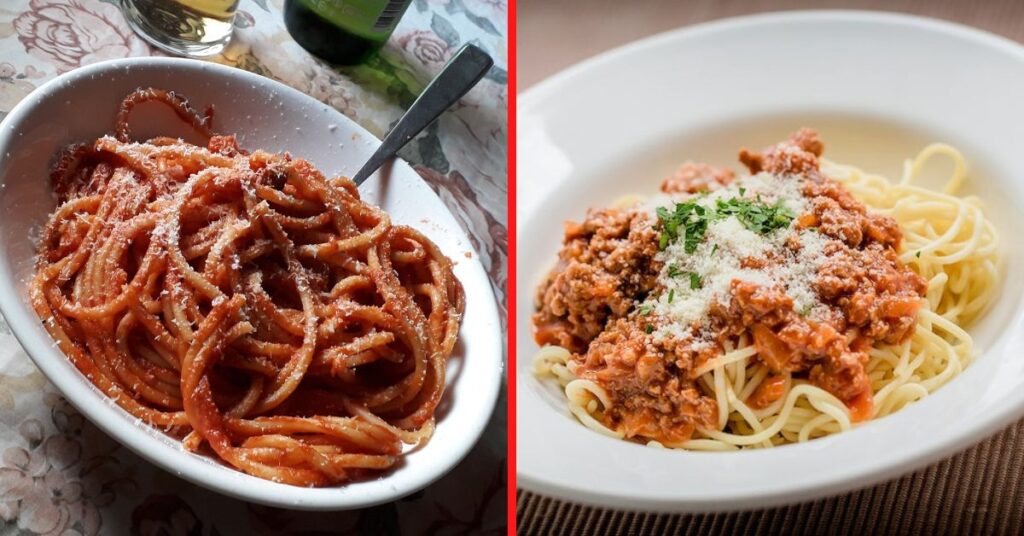
To whip up a pasta dish that would make any Nonna proud, Italian-style, there are some golden rules you just can’t skip. First, get that water rolling to a boil, give it a good dash of salt, toss in the pasta, and keep an eagle eye on it until it’s perfectly ‘al dente.’ Need the secret sauce to nail this? Click here for a step-by-step guide on cooking pasta like you’re straight out of Italy!
What about you? Do you add sauce to pasta or pasta to sauce? Let me know in the comments.
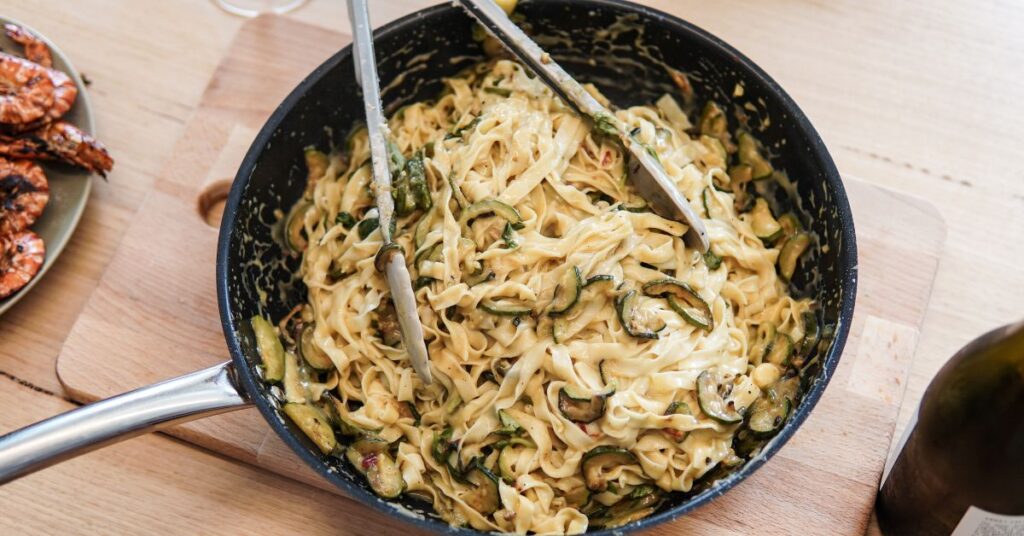
This is how we Italians season pasta, believe me, we know something about pasta… on the other hand, we were the first in the world to eat lasagne.
But you shouldn’t just trust my opinion, trust the Italians, or rather these numbers below. As you can see from the statistics, almost 50% of Italians find it even unacceptable to add sauce to a dish of plain pasta, while in the USA it is considered acceptable by almost 80%.
| Adding plain pasta to a plate and then adding the sauce afterward | Italy | USA |
|---|---|---|
| Acceptable | 44% | 76% |
| Unacceptable | 48% | 11% |
| Don’t Know | 8% | 14% |
Ask Italians what their favorite food is… their answer will most likely be pasta! Italians are addicted to pasta and consume it daily. Every year, Italian people consume about 23 kg of pasta per person (source: International Pasta Organization) and regarding condiments and sauces, we are spoiled for choices, an example, read here how many types of ragù sauce exist here in Italy.
Do you want to prepare perfect pasta with sauce, just like an Italian would do? Keep on reading this article to understand how and when to mix the sauce with the pasta!
Can I add the pasta directly to the sauce?
Yes, you can. To prepare the perfect pasta, make sure to cook it “al dente”: that means you have to drain the pasta when it’s cooked but still firm when bitten.
At this point, you can add the pasta directly into the pan where you previously made the sauce or another type of condiment that requires cooking. In this way, your pasta can absorb all of it. Finish cooking over high heat, mix well, and serve with grated Parmesan on top.
Do you let the pasta cool before adding sauce?
No, you don’t. Your pasta doesn’t have to be cooled when you add the sauce, so please don’t rinse it under water. Actually, it is good to season your freshly drained pasta by adding a little bit of cooking water. In this way, the starch released from the pasta will help to bind the sauce.
If you let the pasta cool without any seasoning, it will stick and you will get a single, sticky block. Pasta must be seasoned cold only when you are making a cold pasta salad.
To prepare a cold pasta salad type of recipe, after draining the pasta, rinse it under cold water and let it cool in a bowl with a generous round of extra virgin olive oil to avoid sticking. Once it has cooled completely, you can add the seasonings of your choice.
If all our pasta shapes confuse you and you don’t know which sauce to use with the different shapes, read the link.
Can you cook dry pasta in sauce?
Usually, Italians do not cook dry pasta in sauce, despite the success of oven-baked spaghetti which is unknown in Italy, but there are some traditional recipes that require this kind of cooking.
For example, pasta and cabbage is a Neapolitan recipe where you add a pan with some sautéed onions, cauliflower, and dry pasta. Then stir and add gradually boiling water until the desired cooking. The result will be a dish halfway between a soup and a plate of pasta.
Another recipe that involves cooking dry pasta directly in the sauce is the “pasta risottata”. Make the sauce, then put the pan in the dry pasta of your choice, keep adding hot water or broth, and stir until completely cooked.
The result will be a very creamy first course, quicker to prepare than a classic pasta recipe.
Cooking pasta like a real Italian is not difficult and there are options that allow you to save time. Don’t forget to follow all these guidelines to get a tasty and perfectly cooked pasta dish!

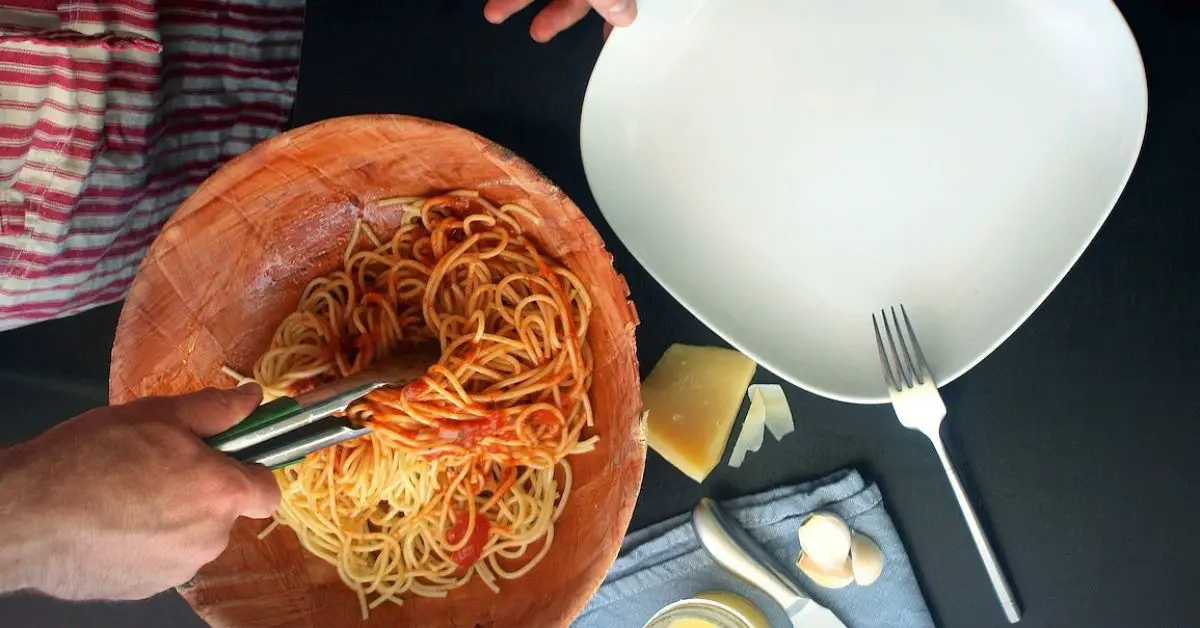
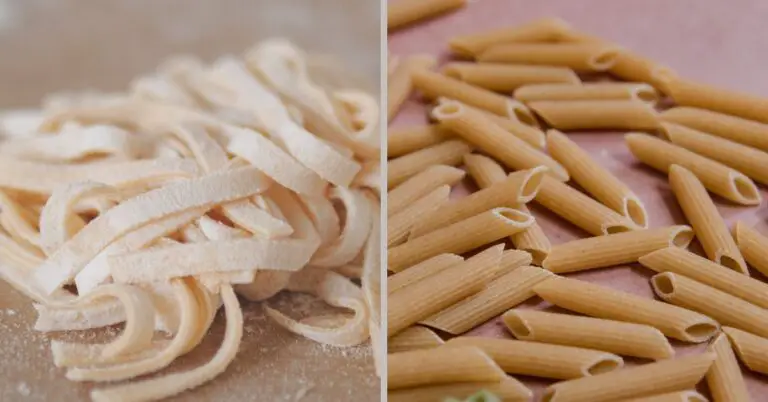
![Why are there so many shapes of pasta? [Taste does change?]](https://whyitalians.com/wp-content/uploads/2023/03/dried-pasta-shapes-768x402.jpg)
![How to Cook Pasta like a real Italian at Home [mistakes to avoid]](https://whyitalians.com/wp-content/uploads/2023/05/Italian-cook-pasta-768x402.jpg)
